Part 3: From Eureka! to the Neverending Story – People and Work at LINEL
Beat Suter
LINEL was a software developer and publisher based in Switzerland. The label was active from 1987 to 1995.
Part 3 takes a closer look at founder Markus Grimmer and the developers, studios, and distributors Grimmer’s LINEL worked with in those years.
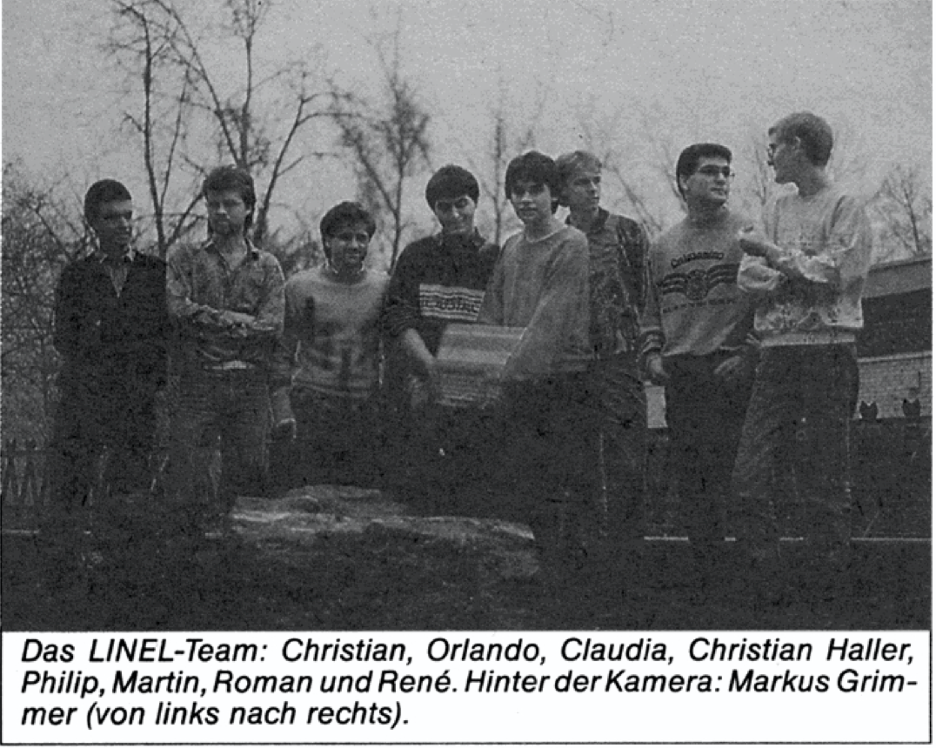
Figure 1: Picture in magazine Aktueller Software Markt 2/1988 with original caption included in screenshot. Source: ASM
Who worked for LINEL?
The first time, games publisher LINEL made a highly visible appearance in the games community was in a two-page article in a well-known German computer magazine in early 1988. In its second issue (ASM 2/88), the German-language computer magazine Aktueller Software Markt published a report on the up-and-coming Swiss team from LINEL that worked on several exciting games at the time. Prominently, the article featured a picture of a group of young developers (fig.1) that must have worked for the label LINEL. The picture was taken by LINEL founder Markus Grimmer and shows, from left to right, the young developers Christian A. Weber, Orlando alias Roland Petermann, Claudio Ambrosi (not Claudia), Christian Haller, Philip Jespersen, Martin Martin, Roman Bossart and René Straub. These were the developers that were on hand in Appenzell for a picture in January 1988. But there were more young developers that worked for LINEL. Missing in the picture or having joined later, there are: Helmuth Melcher, Heinz Lüem, Michael Tschögl, Roman Werner, Pascal De Sapio, Steve Cork, Arndt Hasch and Guido Henkel. The developers were from Switzerland, Germany, Austria and the UK.
The names of the people in the picture were confirmed with Markus Grimmer who took this picture. He is also referred to as the boss of LINEL in the interview. Grimmer lived in eastern Switzerland in Arbon and in the canton of Appenzell and had previously worked as a salesman for software. The name LINEL is said to come from a previous company owned by Markus Grimmer, which sold lighting and illumination products under the name Linea Elegance. The editor of ASM, Manfred Kleinmann, interviews only Markus Grimmer and prints the two-page text as an interview. In it, Grimmer acknowledges his role as producer and distribution and marketing manager of LINEL, who wants to motivate young programmers and turn their ideas into games. He says that he doesn’t know anything about programming himself, but that he sits down with the young people and works out game concepts as a team. In addition, he always tests all prototypes intensively. At the time of the interview in early 1988, LINEL was said to consist of around 15 people working as freelancers in the LINEL team.
First Release: Insanity Fight (1987)
From about 1984 to 1987 Markus Grimmer’s LINEL imported and sold software and games mostly from the UK. The first ‘own’ game LINEL released was Insanity Fight (1987). In the summer of 1987, the young programmer Christian Haller joined LINEL with some of his friends from Aargau and Zurich. His game was already very advanced, so in November 1987 it was the first game to be launched on the market by LINEL. According to Markus Grimmer (in the ASM interview), six other programs and conversions were in the works at the time. Insanity Fight (fig.2) only appeared for the Amiga platform but was well received at trade fairs and by game fans. After two weeks it was in the charts and got nominated for the award: “Best Shoot-em-up 1987 on the Amiga”. Markus Grimmer says: “Insanity Fight was the first parallax scrolling game back then. And the manufacturer said at the time that Amiga was not capable of parallax scrolling except with sprites, but not with large backgrounds like we had done back then. It was absolutely groundbreaking. And I have to say that Christian Haller was considered one of the best programmers on an Amiga at the time.” (Markus Grimmer in a conversation with Beat Suter on November 28, 2023). The parallax scrolling unfortunately made it impossible to port the game to Atari ST at the time. This meant that there were not many sales in the American market, where the Atari ST was much bigger than the Amiga at the time– a missed opportunity.
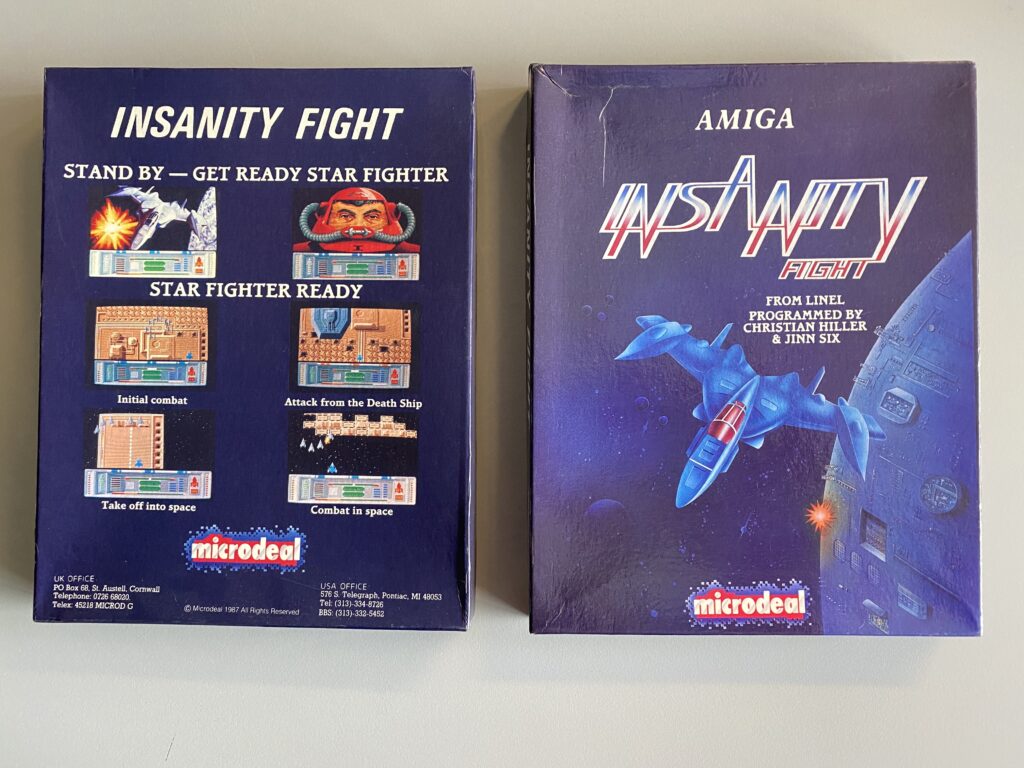
Figure 2: Insanity Fight (1987), distributed in the UK and USA by Microdeal. Below the title, it is stated that the game is from LINEL, the programmers’ names each have a mistake: it is Christian Haller, not Hiller, and Jann Six, not Jinn.
In the ASM-interview, Grimmer paints a rather harmonious picture of the LINEL development team at the time. “We pay people well by industry standards; the working atmosphere here is also certainly great. The programmers all know each other and regularly exchange experiences.” (ASM 2/88) Sound and graphic designer Michael Tschögl sees it also positively when he is asked by CH-Ludens researcher Eugen Pfister about his experience with LINEL: “Linel provided a house in which we lived during the development of various games. It was very spartanly furnished. I got to know the other people in connection with the in-house development in Appenzell.” The relationship with the other developers was “very relaxed and funny at the same time. I was able to perfect my English in the two years that I spent with people who were mainly from England.” The work for LINEL on site “was very important, as it meant that everything was practically on site and the programmers were somewhat under control. There were also [artists and programmers that] were not ‘in-house’, and [they were often] quite unreliable and [the cooperation] was rather cumbersome.” (Michael Tschögl in an email exchange with Eugen Pfister on January 10, 2024) Tschögl refers to the in-house development in Appenzell between 1988 and 1991. Several times, Markus Grimmer had rented a farmhouse and invited the developers to work and collaborate there for up to three months. But the very first in-house development took place in 1987 in a vacation home in the Canton of Ticino, also organized by Markus Grimmer. The purpose of the first in-house development was finishing and polishing the game Insanity Fight. Chris Haller talks about it in the interview with CH-Ludens researchers David Krummenacher and Larissa Wild (October 14, 2023) and says, him and his colleagues (René Straub, Roland Petermann, Jann Six and possibly Claudio Ambrosi) at the time thought this was cool, but looking back, the conditions were quite hard. They had to finish the game in one week.
When asked (in the ASM-interview) whether it is more difficult for a Swiss company to prove itself on the international software market, Grimmer points out that success depends above all on the quality of the software. LINEL strives for a high standard, just like software houses in the UK and Germany. Markus Grimmer had previously worked as a software salesman. The reason for this was that a computer dealer in St. Gallen, from whom he had bought a Commodore 64 computer in 1984, had no official software available for the machine and offered him a pirated copy for his trading company’s accounts. He then began importing software from the UK to Switzerland (ASM 2/88). In 2023 he elaborates: “How did we get started? Basically, I come from the electrical sector and had nothing to do with computers. I was looking for an accounting program and saw that there was a St. Gallen developer behind it and asked him if we could distribute the program. He finished programming it, but then gave it to someone else to distribute. I got to know the programmer in a C64 store in St. Gallen and there and then came across the games. Whenever you were in the store in St. Gallen, they had pirated disks behind the counter that they could take out and sell. And I said to myself that these disks could also be legally imported into Switzerland and officially distributed to stores and customers. I then wanted to start distributing them but realized that a lot of things are hacked in Switzerland. I then got to know the hacker scene and thus also the programmers.” (Suter 2023)
Grimmer’s first game as producer: Eureka! (1984)
However, Markus Grimmer’s start into publishing and distributing games had an exciting but grinding beginning. The first project was not Insanity Fight (1987), but the game Eureka! (1984) (fig.3) that was developed by Hungarian developers under the lead of Andràs Csàszàr (as Andromeda Software) and finally distributed by Domark in the United Kingdom. The British producers of Concept Marketing (Dominic Wheatley and Mark Strachan) had gained well known Ian Livingstone as writer for the text adventure. Markus Grimmer was in contact with them and intended to distribute Eureka! in German and other languages. He says: “At that time I had only done the translation and, together with the Hungarians, the integration into the C64 version. I was then forced out of the contract due to some small print in the contract, and Domark then also took over the distribution contract that Rushware had signed with me. — And that was my entry into the games business.” (Suter 2024a). But Grimmer had also been involved in the development process in Hungary. He explains: “The game was divided into five chapters, otherwise it would have been too big. We made the German version for C64 and ZX Spectrum, but only C64 was relevant for the German market. I then spent another three weeks behind the ‘iron curtain’ and finished the program with the programmers.” (ibid.) And at that time, Grimmer was certain to own the license for the German release of the game and placed ads in magazines for a prospective sale.
Eureka! (1984) was a rather prestigious video game at the time. Writer Ian Livingstone was famous through his Fighting Fantasy game books. By the end of 1984 the gamebook series that Livingstone started together with Steve Jackson had sold more than 2’000’000 copies. Jackson and Livingstone had also founded a store they named ‘Games Workshop’, a tabletop and boardgame store in which players met and were able to play and create their game figures, stories, and tabletop fights. Games Workshop grew into a chain that established itself all over Europe and the Anglo-American countries. Some stores survived and still serve the community today. And the Fighting Fantasy book series has become the most popular game book series ever.

Figure 3: Eureka! Game Box, the English version. [Still searching for a German version.] Source: Suter
The game Eureka! (1984) was a text adventure with some illustrations that consisted of five epic adventure games. Each was preluded by an arcade game in which the player could gain more stamina points for the next quest. Together with a lavish booklet, it was offered as a package. Each Adventure has its own plot which when solved will lead the player to a piece of the talisman. If you collect all five talismans, you solve the game. A reviewer points out that it is a vast game that captures your focus quickly and immerses you very much. Music and sound effects are spectacular, he says. And “there are graphics [sic!], and they are created in a most innovative way.” He concludes: “With or without the prize, this package has got to be terrific value.” This review in the magazine Computer and Video Games (CVG) 12/1984 on page 46 gave Eureka! (1984) very high marks of 93%: Graphics 9, Sound 10, Value 10, Playability 8. Other reviews did not give quite as good scores, but the reviewers were all impressed by the size and complexity of the narrative and the riddles of the adventure game.
But there was something else that captured everyone. A reward was offered to the first person that could complete the challenge of all five chapters. “The prize money was a sensation and naturally attracted a lot of press. It was 85,000 DM at the time” explains Grimmer (Suter 2024b). The British publisher Domark had enough confidence in the release of the game to offer an enormous reward of £25,000. Each section of the game had a clue associated with it, and once all of these had been solved, they could be put together to reveal a hidden code and a telephone number. The difficult challenge had to be completed by the end of 1985. The players of the German version were expected to join in the hype as well. Grimmer placed some eye-catching advertising for the extraordinary reward like the one in Happy Computer 3/1985 (fig.4) where he was even offering a 24-hour hotline for players.
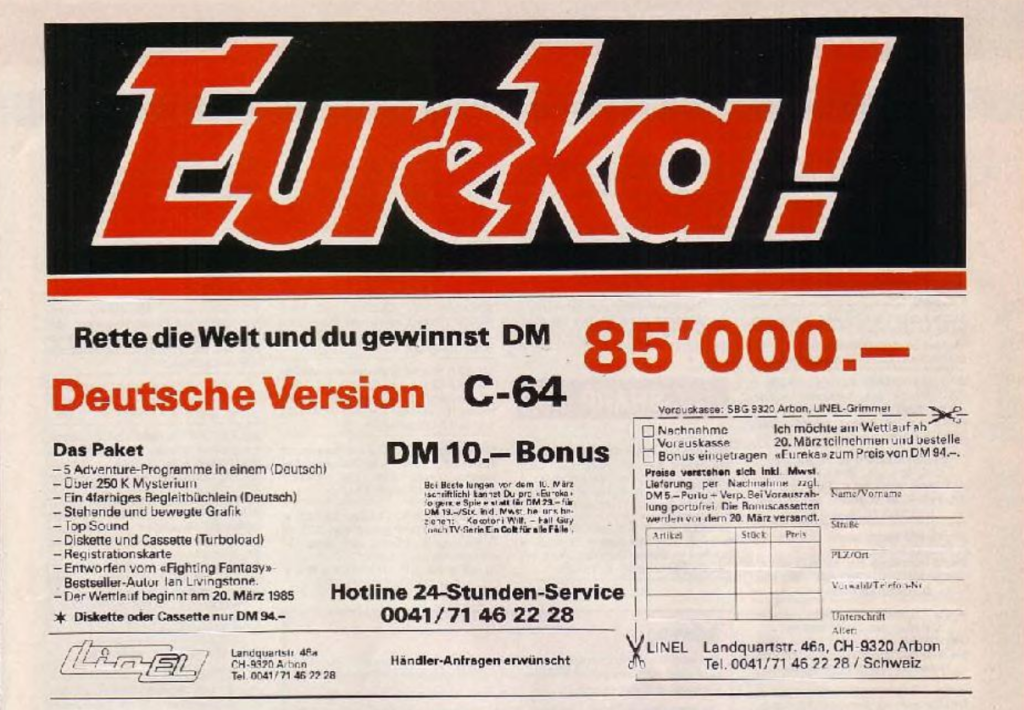
Figure 4: Ad by LINEL for EUREKA! C64 Version in Happy Computer 1985-03. Source: Happy Computer
Today, it is hard to find the German version of Eureka! that Markus Grimmer produced with the Hungarian studio. There is however a review in German in the magazine Happy Computer 4/1985 by Manfred Kohlen. There is an entry for the German version into the Interactive Fiction Database (IFDB) and there is a video by c64werner on YouTube, that shows a short play session of the first of the five stories of Eureka! with German text.[1] The reward was finally won at the end of 1985 by a 15year old British boy named Matthew Woodley as a news blip in Happy Computer 12/1985 informs and shows a picture of him getting the big check handed by Domark bosses Dominic Wheatley and Mark Strachan.
Working with the young developers
A large proportion of the young Swiss programmers came from rural communities in the canton of Aargau. Heinz Lüem lived in Hendschiken, Roland Petermann in Muri, Chris Haller and René Straub in Unterkulm. Christian Weber was from Zurich and Roman Werner lived in Hombrechtikon ZH. And Philip Jespersen lived in Basel. Most of them got to know each other through their love of programming and usually learned to program and create graphics in pairs. Heinz Lüem worked on four games but was the first to say goodbye to game development and opened his own company in his hometown Hendschiken AG. The company HL Informatik still exists today under Heinz Lüem’s management (interview by Larissa Wild and David Krummenacher, 2023). Roland Petermann alias Orlando was the well-known graphic crack. He worked on several LINEL games but contributed to many other games over a period of 10 years. Chris Haller and Christian Weber cooperated on several projects, both as programmers, starting with the porting of Eliminator in 1988. And René Straub had already done a listing game in 1985 with Cave Flight for the ZX81 8-bit machine before he worked as programmer and in graphics for LINEL and later Starbyte on more than 12 games. Roman Werner first did music for LINEL with applying Haller’s Amiga sound tracker Sound FX, before he started his own game Traps’n’Treasures (1993) that was finally published by Starbyte and Krysalis. He had the support of some of the other developers like Christian Weber and Roland Petermann.
But Markus Grimmer was constantly looking for coders since he wanted to publish the games on as many platforms as possible. It was problematic to find coders for ZX Spectrum and C64 in Switzerland, so he placed ads in British magazines and lured young English and Scottish developers to Switzerland to work for him, promising at least a paid flight to Switzerland. “That was the deciding factor for many to come to Switzerland”, says Grimmer. “We were not known as a software company. The teams worked and lived in these two houses [in the Appenzell area] for a few weeks or two to three months at a time. We were able to work together quite intensively, and they were able to support each other. And it was particularly practical when it came to graphics. Instead of them sending us the graphics with 14400 baud modems, which took half an hour or more for a few sprites, we could exchange the graphics with each other or make the adjustments directly on the other computer, as Michael Tschögl often did. There was no such thing as sending a quick email like today.” (Suter 2024d) Grimmer intended to build a software company and no longer just be the publisher.
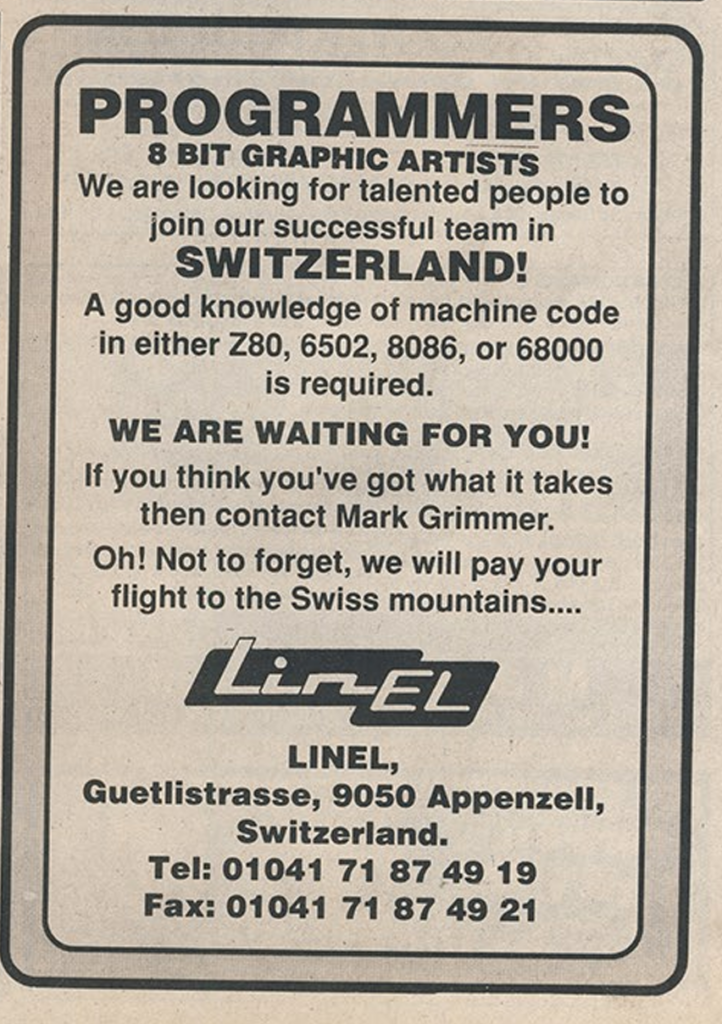
Figure 5: Ad from 1990 (New_Computer_Express_Issue_83_JUne_1990_p37). Source: New Computer Express
Dream Job at the Top of Europe
The search for 8-bit coders worked out. LINEL found them. There were quite a few young British coders that made it to Switzerland and were temporarily part of Grimmer’s team in the years from early 1988 to 1992. An article in the Swedish magazine ‘Datormagazin’ features an amazingly idyllic picture of LINEL on a green pasture in front of the mountain panorama. Exactly, what Grimmer needed for his image abroad. The title says: Dream Job at the Top of Europe. The picture was taken by the Swedish journalist Magnus Sjöqvist in 1990 presumably in Gontenbad, Appenzell. It shows the LINEL team flanked by Swiss cows. Markus Grimmer is the only person without a computer, standing on the right. Standing on the left is the Austrian Michael Tschögl (music and graphics) from Bregenz who had been looking for work and found it just across the border with LINEL in Switzerland. He carries an Amiga computer under his arm. Kneeling on the left is young Swiss developer André Wüthrich with a CPC Amstrad or CPC Schneider on his knees, he was the lead coder for the game Traders (1990). Kneeling on the right is the young developer Ste Cork from Manchester with a ZX Spectrum on his knees; he worked among others on the Neverending Story II (1990) for Markus Grimmer and stayed in the Appenzell for some time to work for him on several games, not being so happy about circumstances. The article mentions a second Brit that cooperated with Ste Cork on location. He is not on the picture. The two were responsible for converting LINEL games to PC, the writer Magnus Sjöqvist states. He finds it remarkable that young talented English people come to Switzerland for work. And he continues: “The salary corresponds to 600 English pounds a month. In addition, there are bonuses on sold games, free housing, unlimited air travel and unlimited rösti and schnitzel and other Swiss food.” Grimmer says of Ste Cork that he was “an exceptional developer, writing assembler at the speed of a top secretary typing a letter.” (Suter 2023)
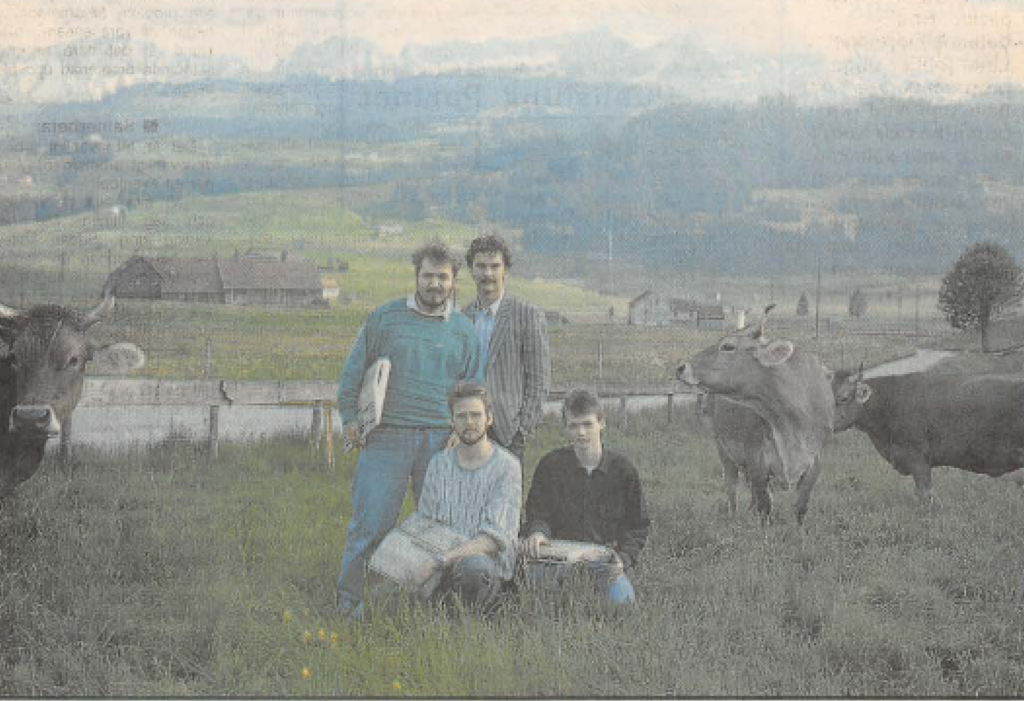
Figure 6: Original caption of “the alpine game developer team of LINEL” in the Swedish Datormagazin 17/90: “Amidst the mountains, with only cows for company work Michael Tschögl, Markus Grimmer, Andre Wüthrich and the Englishman ‘Ste Cork’. Behind the perpetually snow-covered mountain ridges lies the tax haven of Liechtenstein and the ski resort of St. Moritz.” Photo: MAGNUS SJÖQVIST.
For businessman Markus Grimmer, it was of great importance to conclude deals with foreign publishers who could guarantee the distribution of the games in countries such as the UK, the USA, Germany, France, Italy and Spain. These included the well-known English game publisher Hewson Consultants in 1987, the US publishers Micro Deal (1987) and Merit Software (1991), the Italian developer and publisher GENIAS (1990), the Spanish publisher Systeme 4 (1990) as well as Software 2000 (1993) and Rushware (since 1984) with Softgold (1995) from Germany. From the very beginning, Grimmer looked to collaborate with other studios and publishers, regardless of the country in which they operated. And especially for projects from 1990 onwards, LINEL always worked in mixed teams with developers from England, Germany, Scandinavia and Switzerland. Some games were also developed entirely in Germany or Austria, such as Regent (1992) (fig.7) and Regent Deluxe (1995) but were produced and distributed by LINEL. The latter two games were developed by the Austrian Martin Martin, who can be seen in the introductory photo (fig.1) as the sixth person from the left, and who had been in contact with LINEL since 1988. He had developed the Regent game practically single-handedly over a period of four years. According to Markus Grimmer, he was sponsored by his uncle. In the end, he was able to get his game into the market via LINEL.
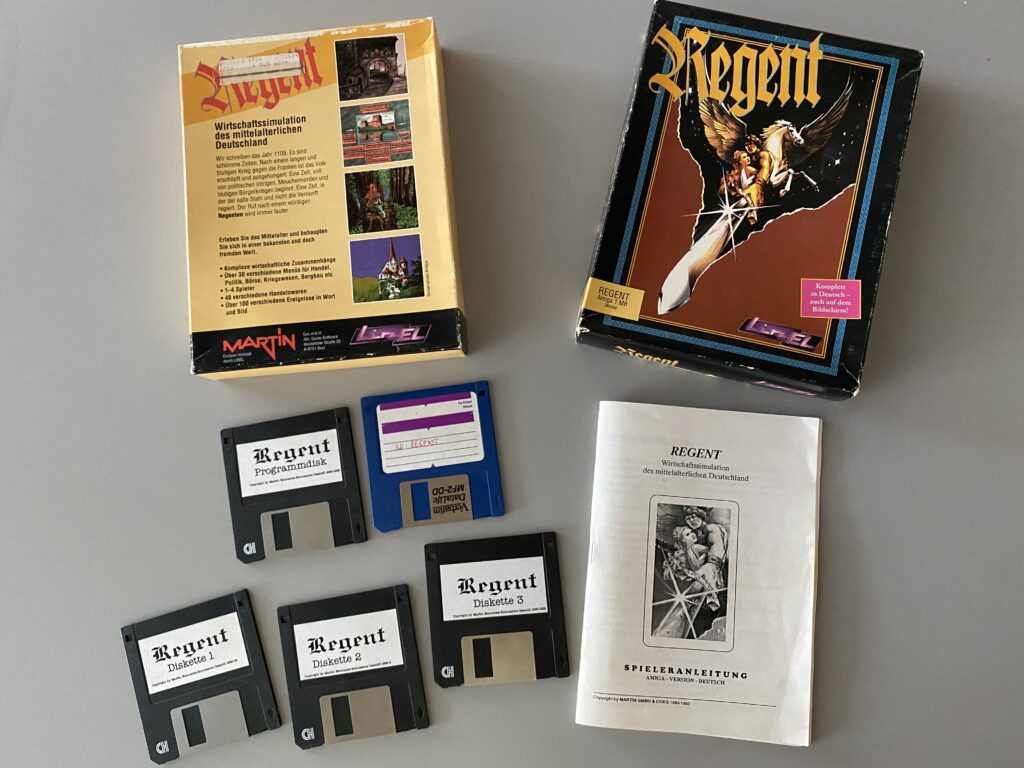
Figure 7: Regent (1992) by developer Martin Martin came on three disks, had an extensive booklet, and was eventually published by LINEL. Source: Suter.
In 1989, Markus Grimmer signed a contract for LINEL with the two German developers Guido Henkel and Hans-Jürgen Brändle to publish their game Drachen von Laas, after the two had fallen out with Ariolasoft. The two developers called themselves Dragonware. Henkel, who lived in the Allgäu at the time, visited Grimmer in Appenzell and was impressed by the joint work of the developers there. In addition, LINEL had a sales channel in England, which Henkel was particularly interested in.
From text adventure to point’n’click adventure
According to Henkel, however, LINEL was primarily interested in marketing the text adventure Ooze (also by Henkel and Brändle) in the UK and had delayed the release of Drachen von Laas, so that the two German developers terminated the contract in 1990 and finally published the game under their own (now newly founded) label Attic Entertainment. Ooze, by the way, was released in England in 1989 via LINEL (fig.8) after some delays, but it had no impact on the market. Henkel says that only a few hundred copies were sold. Grimmer says it was already too late to be successful with text adventures.
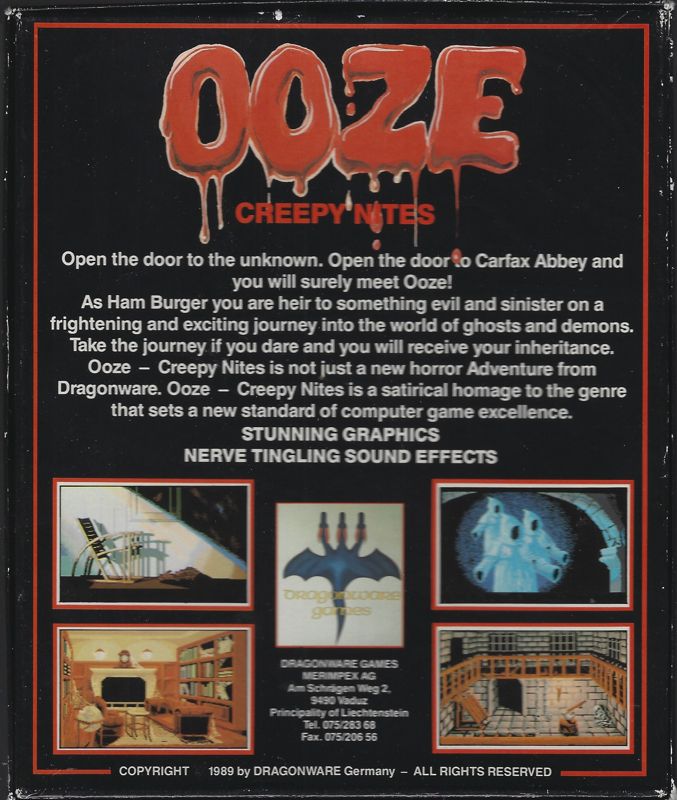
Figure 8: Back of the box of the British version of Ooze: Creepy Nites (1989), developed by Dragonware and published in the UK by LINEL without logo and name, but with the address of LINEL’s partner Merimpex in Liechtenstein. Source: Mobygames.
And when Henkel asked Grimmer why Drachen von Laas had still not been published, Grimmer is said to have replied that LINEL had money problems, but that he could come back to Appenzell and help them with other games where they still had a few problems. Soon afterwards, Henkel went to Appenzell and helped to program some of the games. In an interview with Gunnar Lott and Christian Schmidt, he says that he met some great people there, some of them from England: “All young guys, all very inexperienced, but actually quite brilliant.” Eventually, Henkel says that he did not receive any money for his help. Grimmer replied that he had fed him and let him stay overnight. He couldn’t give him any money. He would have to do proper contract work. He would give him 2000 to 3000 if he could port the Kaiser game to Amiga. Henkel then did this, but it was not easy; the code of the Atari ST version by Dirk Beyelstein he was working from was “completely undocumented” and therefore difficult and time-consuming to convert. (Lott, Schmidt 2019)
Markus Grimmer says regarding Drachen von Laas by Henkel and Brändle: “It’s being written that we delayed it and didn’t want to publish it. That’s not entirely true. Text adventure games were not in anymore, not least because Lucas Arts had come out with point’n’click games and had great success with Indiana Jones [and the Last Crusade: The Graphic Adventure (1989)] and other adventure games.” (Suter 2024d) Text adventures still sold reasonably well in Germany. Grimmer recalls that this was mainly because of Harald Evers, a well-known author[2] who worked with Software 2000 and had also written books. His games still sold ‘relatively’ well. And because of his success, many programmers who were still making text adventure games thought that this would continue. “But that time was over”, states Grimmer. “Nobody in England was interested anymore. Nevertheless, we were very interested in Drachen von Laas and entered negotiations with US Gold, one of the market leaders [in the UK] at the time.” However, US Gold dropped out in the middle of the negotiations because the company had “fallen flat on its face” with the last two or three text adventures. Henkel had also done other conversions for us at the time, but his heart was set on this game because he had also written it.” Grimmer continues: “We had another adventure game that was gigantic: It was called Ice and Fire. That was also a text adventure. But in the end, we turned the programmer down. He had made it so gigantic and didn’t want to change it as far as the pictures were concerned.” The illustrated text adventure Ice and Fire “would have needed three disks, but back then, no one wanted to take on a text adventure on three disks anymore.” (ibid.)
Development camp in Appenzell
But even after the difficult porting of Kaiser, Henkel says that Grimmer did not hand over any money but pointed out the errors in the code: the game was still not running smoothly. And he suggested that Henkel continued to help with other games: “And so it went on, month after month, … – Drachen von Laas was no longer even an issue.” (ibid.) At the time, Henkel commuted between his home in the Allgäu (Southern Germany) and Appenzell (Eastern Switzerland) – a drive of 1,5 hours. He was convinced that the young English cracks were lured to Appenzell by Grimmer with promises of becoming rich but were never paid. “They only had free accommodation and food. It was always his mother who cooked. They had polenta for lunch. And he literally locked the [young programmers] up. He had rented a railway caretaker’s house and had eight programmers sitting in there, all 17, 18, 19 years old.” (Lott, Schmidt 2019) And every time he arrived in Appenzell by car, Henkel continues, the boys were “delighted” and wanted to go on excursions with him. He then took them shopping, where they could buy sweets and other things. According to Henkel, Grimmer gave them breakfast in the morning, a big pot of polenta for lunch and bread in the evening. “It was unbelievable what went on there. They had no telephone, nothing. And it got to the point where one of the programmers asked me: Can you call my parents and ask if they can pick me up?” (ibid.) Henkel then called a mutual friend in England and asked him to pick up “the young lads”. This friend then actually drove from England to Switzerland by car and “got the programmers out of there” (ibid.).
Henkel then became increasingly at odds with Grimmer: “It turned nasty, almost violent towards the end. And he ended the relationship. And then we were left with no distribution for the game. […] We took back the rights and cancelled the contract for non-performance. It had clauses in it that he simply hadn’t fulfilled, from the payment to the deadlines, he had broken them all.” (ibid.) That was in 1989. And since the market for text adventures had just collapsed, Henkel and Brändle had to forget about their game for the time being. They then focused on graphics and designed Lords of Doom (1990) next. But with the German publisher Starbyte, they experienced an even bigger horror story. As a result, they released Drachen von Laas (1991) as the first product of their own independent label Attic Entertainment. They were able to persuade Larry Elmore to design an exclusive cover for their text adventure game, which then even financed part of the development work for the game Das Schwarze Auge (1992).
One of the English coders that came to Appenzell subsequently criticized his time in Switzerland. However, Ste Cork did not do this in an interview, but in the source code of the game The Neverending Story II: The Arcade Game (1990). It contains a commentary by the young programmer[3], who had previously worked in England on various games such as Xenon (1988) and, for example, a DOS port of Chuckie Egg (1989). Ste Cork has remained loyal to game development to this day. Over the years, he has worked on Quake II, Star Wars games, Marvel games and the Call of Duty series.[4]
“Another Ste Cork Creation, but what a sod to write! // Don’t work for LINEL, it’s lousy money, flies everywhere, the whole place stinks of shit – human and cattle -, there’s NOTHING to do but work, no TV or anything, no pubs, nowhere to go, no car – despite what he tells you, you’re always hungry, ‚phoning home costs you nearly all your wages, if you need medical treatment you’re in trouble ‚cos you’re working there without a permit, your wages are late EVERY month. // I could go on, but I’ve only got 640k ram after all.” (Mobygames, The Neverending Story II: The Arcade Game)
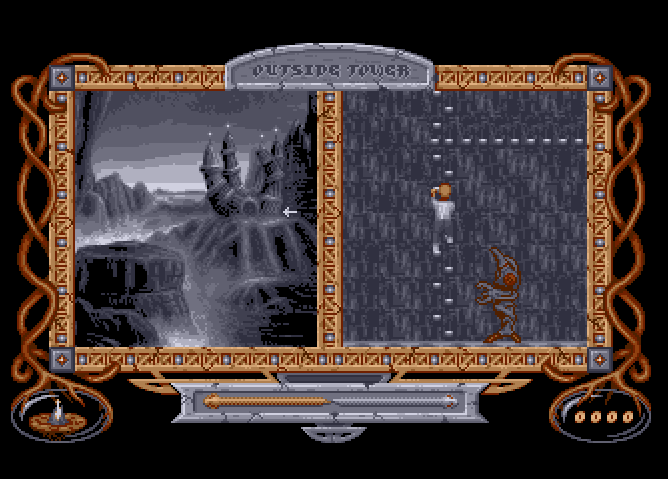
Figure 9: The Neverending Story II: The Arcade Game (1990) by LINEL, screens were presented as partly animated book pages. Source: Mobygames
Working for LINEL
Grimmer says that all the game developers worked as freelancers for LINEL and that they were not only paid for their plane tickets, but also for board and lodging in a specially rented house near Appenzell. They also received a fixed monthly amount for their work, which for the British coders was £600, quite a lot at the time (around CHF 1500). They were there of their own free will and obviously had to come to terms with the local conditions in the Swiss countryside. The remoteness was beneficial to the production of games. The developers were not there for more than two to three months. And some local developers, such as Michael Tschögl for graphics and music, were always happy to join in. Tschögl himself also emphasizes that the joint development work in Appenzell “was very important, as everything was practically on site and the programmers were somewhat under control. There were also some who were not ‘in-house’,” says Tschögl, “but the communication with them was quite cumbersome and unreliable.” (Pfister 2024)
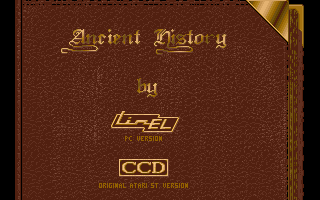
Figure 10: Starting credit screen of the Amiga version of Kaiser (1989), ported by LINEL. Source: Mobygames
Grimmer also recalls that developers could be quite enthusiastic. “We bought our first 486 for 11,000 francs (fig.11). And the programmers were keen to get their hands on a good machine. We bought the machine to make a PC version for the strategy simulation game Kaiser (fig.10) and a PC version for the platform arcade game The Neverending Story (fig.9). The programmer rolled out the red carpet for the machine because it was the fastest machine at the time.” (Suter 2023). However, it was considered a risk to make games with it. If you spend that much money on a computer, you didn’t use it to play games, you used it to work.
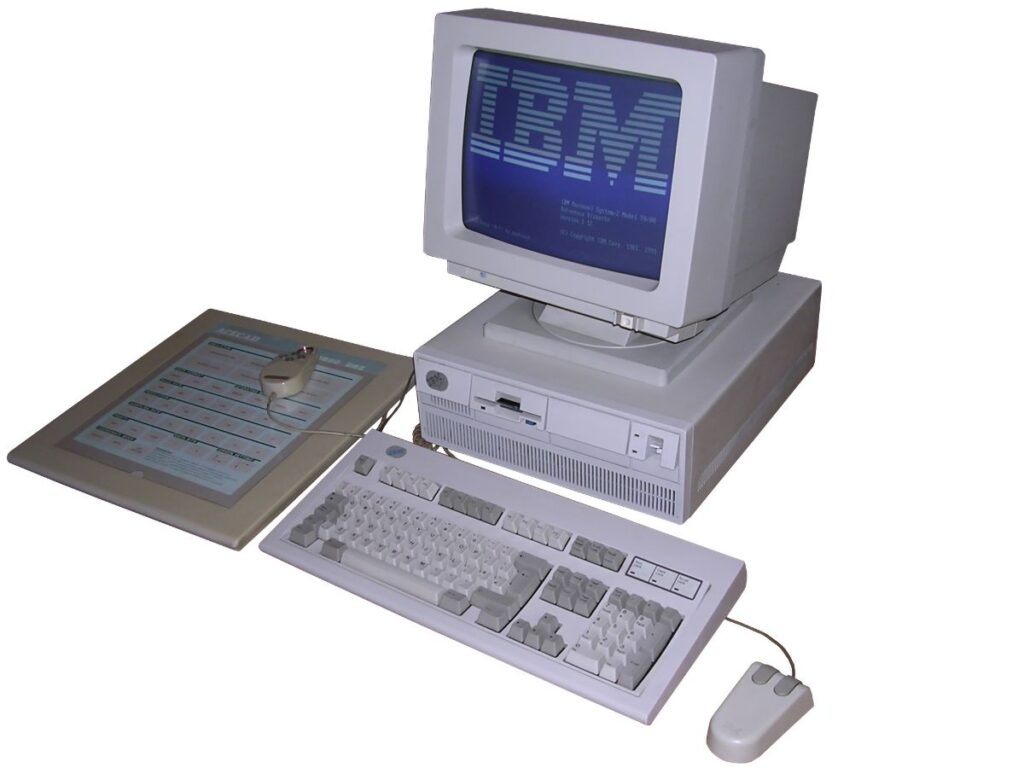
Figure 11: An IBM PC PS/2 Model 70 with an Intel 486DX CPU, introduced in 1989 and mostly used as business machine in the early 1990s. It has VGA graphics and a 1x 1.44MB 3.5” Floppy drive. The same model was used by LINEL for developing games. Source: MCbx Old Computer Collection
“Within a year, however, prices had plummeted. You could shave 2,000 [Swiss] francs a month”, says Grimmer. “A new PC was soon worth half as much. Within a year, prices fell from 10,000 to around 3,000 francs. At some point people said to themselves, it doesn’’t matter if I spend 1,000 on an Amiga or 2,000 on a PC, because I can use the PC for work as well.” (Suter 2024d) In German-speaking countries this was not a problem. The 2,000 Swiss francs or DM were spent without much hesitation because the money was there. The English, on the other hand, continued to hack away at their little machines for a long time. They kept on using the Spectrum ZX for years. But in the early to mid-90s, all other computers died out one after the other. And people everywhere could now switch to PCs, which had become affordable. From that point on, “the game formats for the other computers were only made to cover the current market with the machines that were still in use.” (ibid.) And from then on, developers and publishers focused on the PC. The first big development studios sprang up and a lot of money was invested so that 50 to 100 people could cooperatively work on a project. “But with us,” says Grimmer, “there was always only one person who programmed a game from A to Z. At best, we had a cracker who programmed good intros for us.” (ibid.)
The upcoming part 4 will focus on LINEL’s publishing business within its international context. It will take up the connections laid out in part 1, 2 and 3 and have a closer look at commercial production, distribution, and marketing processes for these games with Swiss participation. Sources and literature follow with final part 4.
[1] c64 werner (2010), Eureka – Commodore 64, https://www.youtube.com/watch?v=6KMqP7VAN7U&t=205s, (23.04.2024).
[2] The Interactive Fiction Autor Harald Evers (born 22 September 1957) was a German author and designer of computer games. Evers was a member of the small development team Weltenschmiede, which published several adventures (first illustrated interactive fiction, later point-and-click adventures). He was both author and designer of the games, but also worked on the graphics for the text adventures and on music and sounds for the graphic adventures.
[3] Cork, Ste, Mobygames, profile, Moby ID: 2504, https://www.mobygames.com/person/2504/ste-cork/, (23.04.2024).
[4] Cork, Ste, Mobygames, credits, Moby ID: 2504, https://www.mobygames.com/person/2504/ste-cork/credits/, (23.04.2024).
LINEL – a Swiss Game Publisher /
— Part 1: Compiling a list of LINEL’s games
— Part 2: International Collaborations and Unreleased Games
— Part 3: People and Work at LINEL
— Part 4: Publishing and Producing at LINEL (expected)
